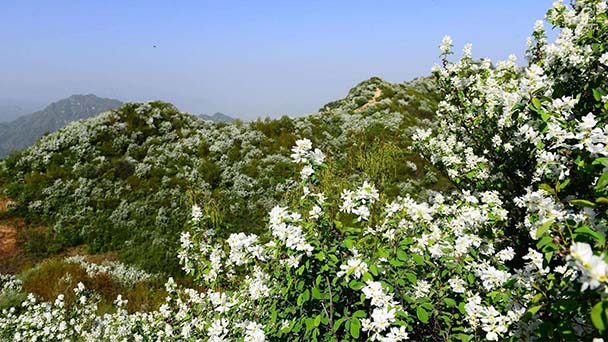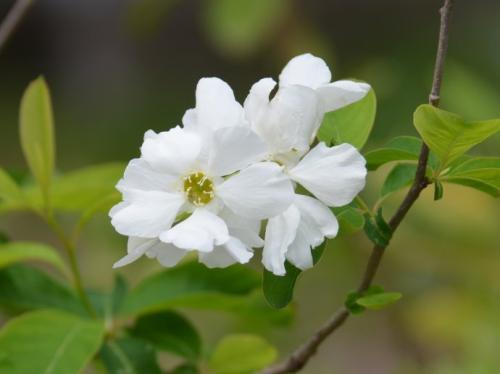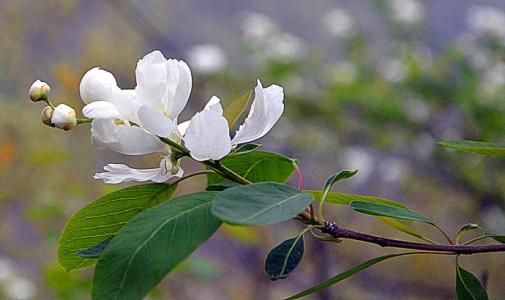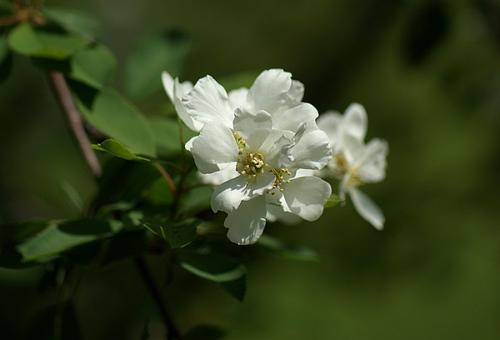The breeding methods and precautions of Exochorda racemosa
Written by Maggie
Aug 24 2021

When growing Exochorda Racemosa, select loose and fertile sandy soil for cultivation, maintain a growth temperature of 15 ~ 25 ℃, and ensure about 6 hours of light every day. Water it once every 5 days and apply fertilizer once every 15 days. Apply appropriate pruning branches, and timely pruning off residual flowers and branches, in the usual maintenance process to do a good job in the prevention and control of pests.
Exochorda Racemosa picture

Methods of breeding Exochorda Racemosa
1. Sandy soil
Exochorda Racemosa is farmed in a sandy soil that is fertile and well drained. Garden soil, fine sand, and cinder can be combined in a ratio of 5:3:2 to make mixed soil. In order to ensure the growth nutrients of the plants, a layer of fertilizer can be laid in the soil before planting.
2. Temperature and light
In exochorda Racemosa's farming methods and precautions, appropriate temperature and adequate light are important. exochorda racemosa prefers a cool environment and can tolerate cold. It is advisable to keep the temperature at 15 ~ 25 ℃. If the temperature is too high in summer, please pay attention to cooling; if the temperature is below 5℃ in winter, please take warm measures.
Exochorda Racemosa prefers warm light. Ensure about 6 hours of light for breeding. Sufficient light is good for plant growth and the number of flowers to increase and open, but be careful to avoid direct light to avoid sunburn.
3. Water and fertilizer management
Exochorda Racemosa prefers a moist environment, but avoids excessive water that can cause stagnant water and rot roots. Generally, water once every 5 days is enough. High summer temperatures in addition to the necessary water intake, also spray water on and around the leaves of the plant to increase humidity.
Exochorda Racemosa has little need for fertilizer because the soil has been laid down before planting, so it is generally sufficient to apply fertilizer once every 15 days, and some phosphate potash can be added appropriately to increase the number of buds and promote flowering.

Notes for Exochorda Racemosa farming
1. Pruning and pruning
Early growth of Exochorda Racemosa involves pruning to promote branching and adjust plant type. In addition, in the daily maintenance, the pruning and finishing of dead branches and yellow leaves is also essential, the flowering should also be timely pruning off the remaining flowers and branches, for the next flowering.
2. Disease and pest control
Exochorda Racemosa mainly has powdery mildew, brown spot and other diseases, and it is found that drug spraying is used immediately. Insect pests are mainly aphids, starscream, etc.. If found, use trichlorfon gush to kill. It is helpful to put it in a ventilated place to alleviate the occurrence of pests and diseases.
3. Propagation
Exochorda Racemosa has three propagation methods: sowing, cutting and layering. Generally, the propagation method is sowing. Sowing around September in autumn is the most suitable.

Latest Updated
- Benefits of Bugleweed - 7 Science-backed Health Benefits
- Bugleweed Dangers & Side Effects - Is It Poisonous?
- How to Plant Evergreen Trees - What You Should Know
- When to Plant Evergreens - Grow Guide for Evergreen Trees
- 12 Wonderful Evergreen Shrubs for Your Garden
- 12 Popular Evergreen Plants with Pictures for Beginners
- When And How To Prune A Lilac Bush Like a Pro
- How to Grow & Care for Lilac Vine (Hardenbergia Violacea)
- Japanese Lilac Tree (Syringa Reticulata) Care & Propagation Guide
- Shumard Oak Pros and Cons - What to Know
Popular Articles
- Winter maintenance of Antirrhinum Majus
- How to Grow Terminalia Mantaly Tree
- How to Grow and Care for Crossostephium Chinense
- How to grow Antirrhinum Majus in spring
- Peristeria Elata (Dove Orchid) Profile: Info & Care Guide
- Underwatered Snake Plant (Sansevieria Trifasciata) - Signs And How To Fix
- How to Care for Brazilian Jasmine Plant (Mandevilla Sanderi)
- How to Grow & Care for Graptopetalum Purple Delight in Summer
- Rosa Chinensis (China Rose): Plant Growing & Care Tips
- How to Care for Baby Sun Rose (Aptenia Cordifolia)